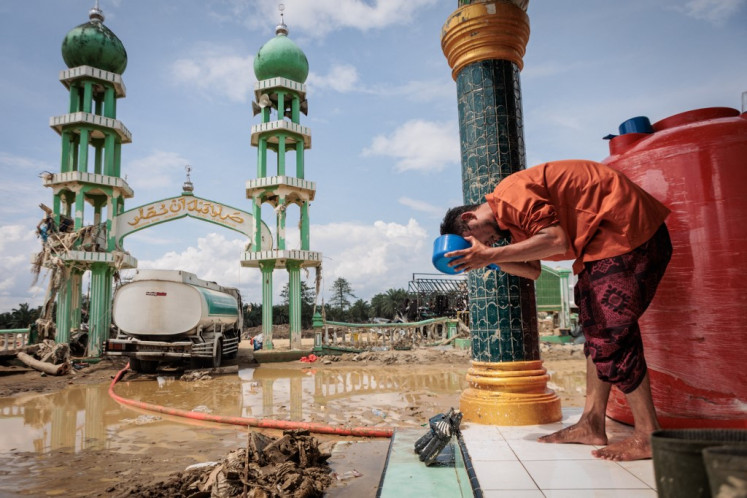Popular Reads
Top Results
Can't find what you're looking for?
View all search resultsPopular Reads
Top Results
Can't find what you're looking for?
View all search resultsSettle long standing snags: REDD team
The presidential team tasked with paving the way for the REDD carbon credit scheme has set high reform targets for forest governance, including resolving long-standing zoning and licensing issues, ahead of a forest moratorium on new licenses that will become effective next year
Change text size
Gift Premium Articles
to Anyone
T
he presidential team tasked with paving the way for the REDD carbon credit scheme has set high reform targets for forest governance, including resolving long-standing zoning and licensing issues, ahead of a forest moratorium on new licenses that will become effective next year.
The taskforce said it aimed to resolve forest boundary issues, forest categorization, spatial planning and overlapping use of forests.
“The two-year moratorium will be a “time out” to improve things related to the forest governance,” said the president’s unit for development monitoring and oversight, Nirarta Samadhi.
He said the REDD scheme, which stands for reducing emissions from deforestation and forest degradation, could not work effectively if forest problems remained unresolved.
“Initially, the taskforce will focus only on REDD, but inevitably we need to settle forest manage-ment first. The REDD should be seen as a goal of governance reform in forest.”
President Susilo Bambang Yudhoyono is slated to issue a presidential instruction on the moratorium with one of its articles stipulating a new definition that would cover all forests.
“We need to make a single definition for forests.”
Asked whether the definition would encompass oil palm plantations as part of forests, Nirarta said “I probably could not say, let’s see the instruction out and we can challenge it publicly.”
The 1999 law defines forests as an integrated ecosystem in the form of land comprising biological resources, dominated by trees in natural form and surrounding environment, and which cannot be separated from each other.
He said currently the Forestry Ministry and the Environment Ministry referred to different definitions for forests.
The moratorium was stipulated in the climate change deal between Indonesia and Norway, with the latter pledging US$1 billion to Jakarta.
The government has nominated nine provinces — Aceh, Riau Jambi, South Sumatra, West Kalimantan, East Kalimantan, Central Kalimantan, West Papua and Papua — to host REDD pilot projects.
The pilot project will be held in one of those provinces, and the host province is required to stop issuing licenses for natural forests and peatland conversion.
Nirarta said it should be mandatory for the other eight provinces to resolve border issues too.
Central Kalimantan has 15 million hectares of forests and East Kalimantan 14 million hectares. Papua has 40 million hectares, Riau 9 million and Jambi 2.17 million.
Central Kalimantan less than 1 percent of the total length of forest borders have been defined; 4 percent in East Kalimantan, 5 percent in Papua, 6 percent in Riau and 1 percent in Jambi, a report by the Supreme Audit Agency showed.
The Forestry Ministry said it had drawn 219,606 kilometers of border lines for 282,873 square kilometers of forests.
The ministry says it plans to define another 25,000 kilometers of forest boundaries over the next four years.










